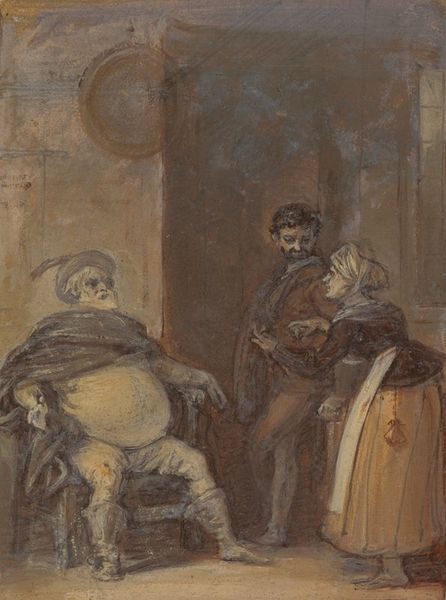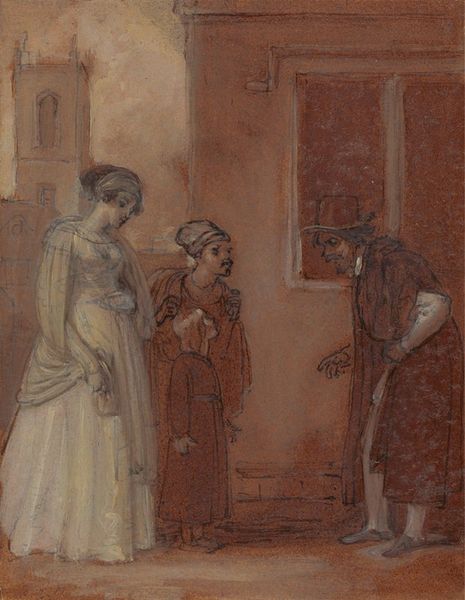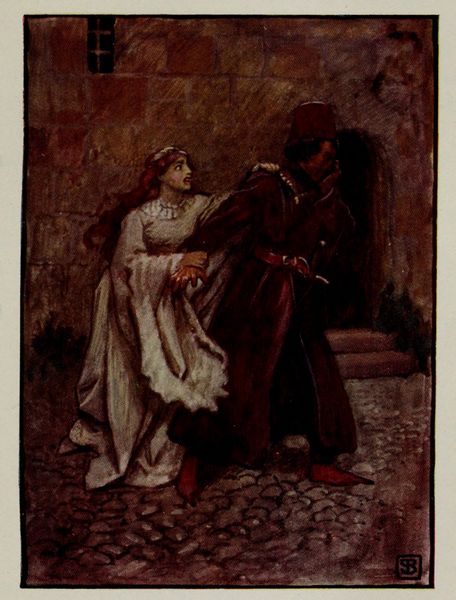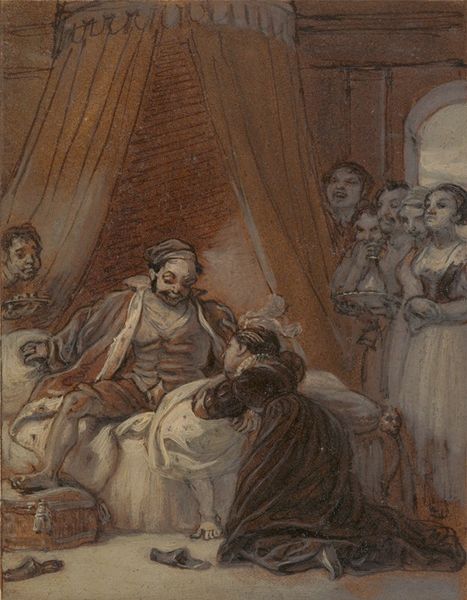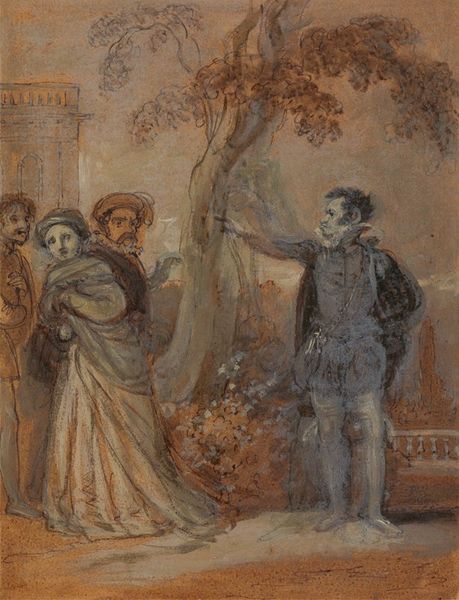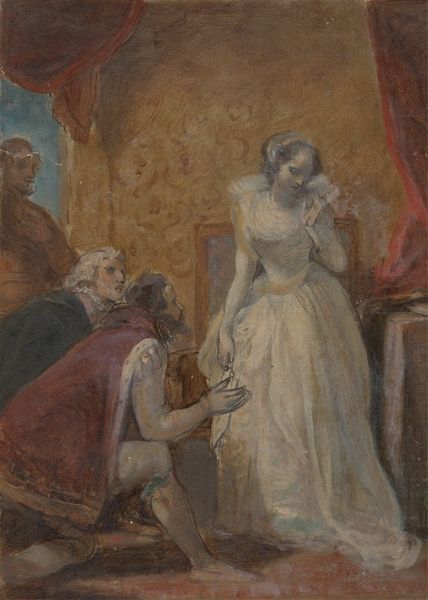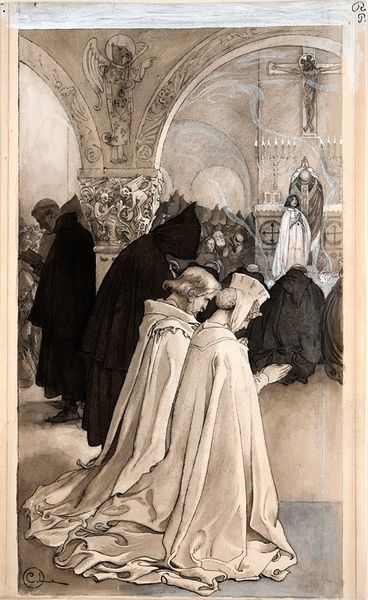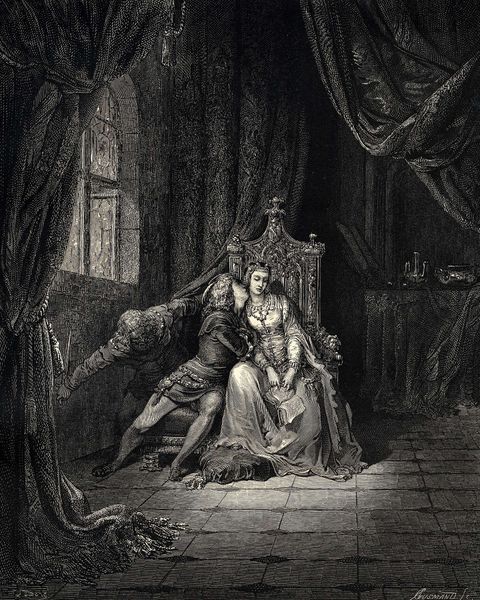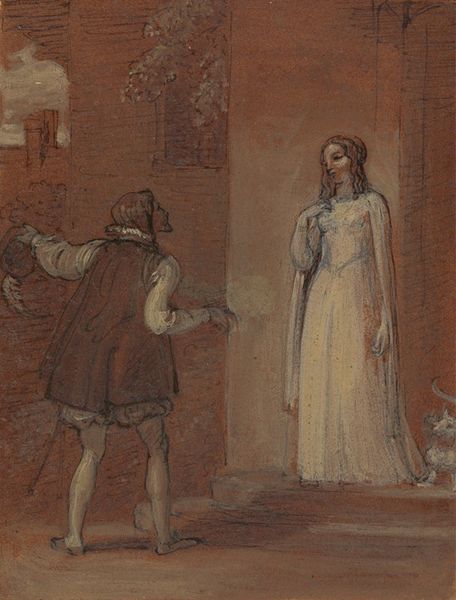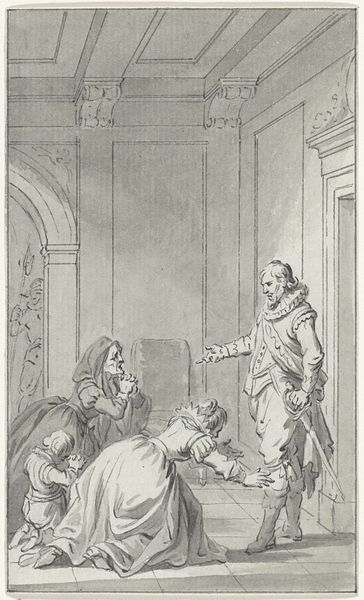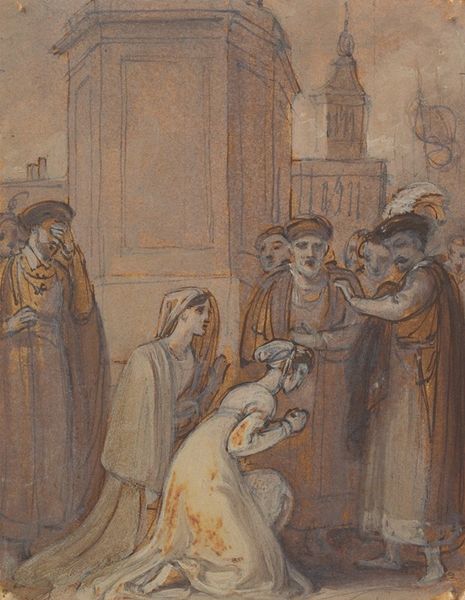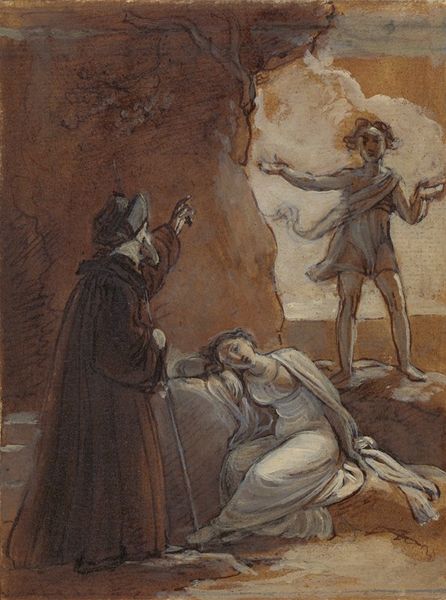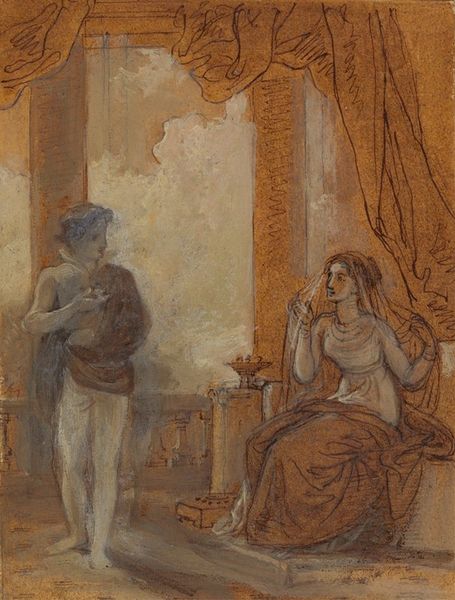
drawing, pen, charcoal
#
portrait
#
drawing
#
narrative-art
#
charcoal drawing
#
pen
#
charcoal
#
history-painting
#
charcoal
Copyright: Public Domain: Artvee
Curator: Here we have Robert Smirke's pen and charcoal drawing from 1822 entitled, "Feste, as Sir Topas, addressing Malvolio". It illustrates a scene from Shakespeare's Twelfth Night. Editor: Oh, how wonderfully theatrical! The use of charcoal and pen really creates a dramatic atmosphere, all sepia tones and lurking shadows. There’s definitely a sense of mischief and perhaps even cruelty in the air. Curator: Yes, Smirke was quite adept at capturing theatrical moments. As a history painter, his works frequently illustrated literature. He capitalized on the vogue for Shakespeare in British popular culture, producing accessible art for a broad audience. Note the way he stages the composition, almost like a play within the drawing. Editor: Exactly! And the figures... Feste, looming in his disguise, Maria, her ear pressed mischievously to the door, and Sir Toby Belch, lurking, holding a goblet and reveling in the chaos. Their posture speaks volumes. It all points to themes of deception and trickery. I’m intrigued by the way Smirke renders Feste's clothing - the layers, the bulk... there's an imposing quality even though he is technically playing the fool. It makes me think of ancient rituals where dressing in disguise blurred the line between the human and supernatural, bringing to mind the figure of the shaman. Curator: An interesting parallel! And yes, you are right: that tension between foolery and profound insight, typical of the Shakespearean fool, is vividly portrayed. Consider also, though, how paintings such as this circulated through engravings. Smirke understood the print market well. His artistic choices helped him to craft very popular images, offering moral and historical narratives. Editor: This adds another layer. These symbolic enactments gain political force through wide circulation, touching people in their private homes and shaping the imagination. It creates a collective memory through repeated circulation of certain forms of imagery. The image taps into familiar symbols like folly, plotting, eavesdropping... elements that connect with timeless aspects of human nature. Curator: That’s precisely what made Smirke so successful: accessible images, moral themes, readily available and easily understood. A brilliant reflection of the public's appetite for narrative art at the time. Editor: Absolutely! And from my perspective, the durability of symbols ensures that even today, separated by centuries, we are immediately keyed into the emotional dynamics represented.
Comments
No comments
Be the first to comment and join the conversation on the ultimate creative platform.
